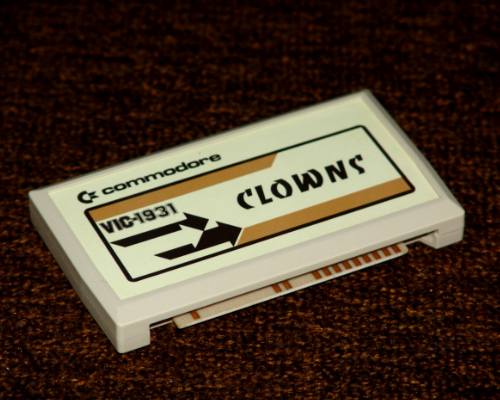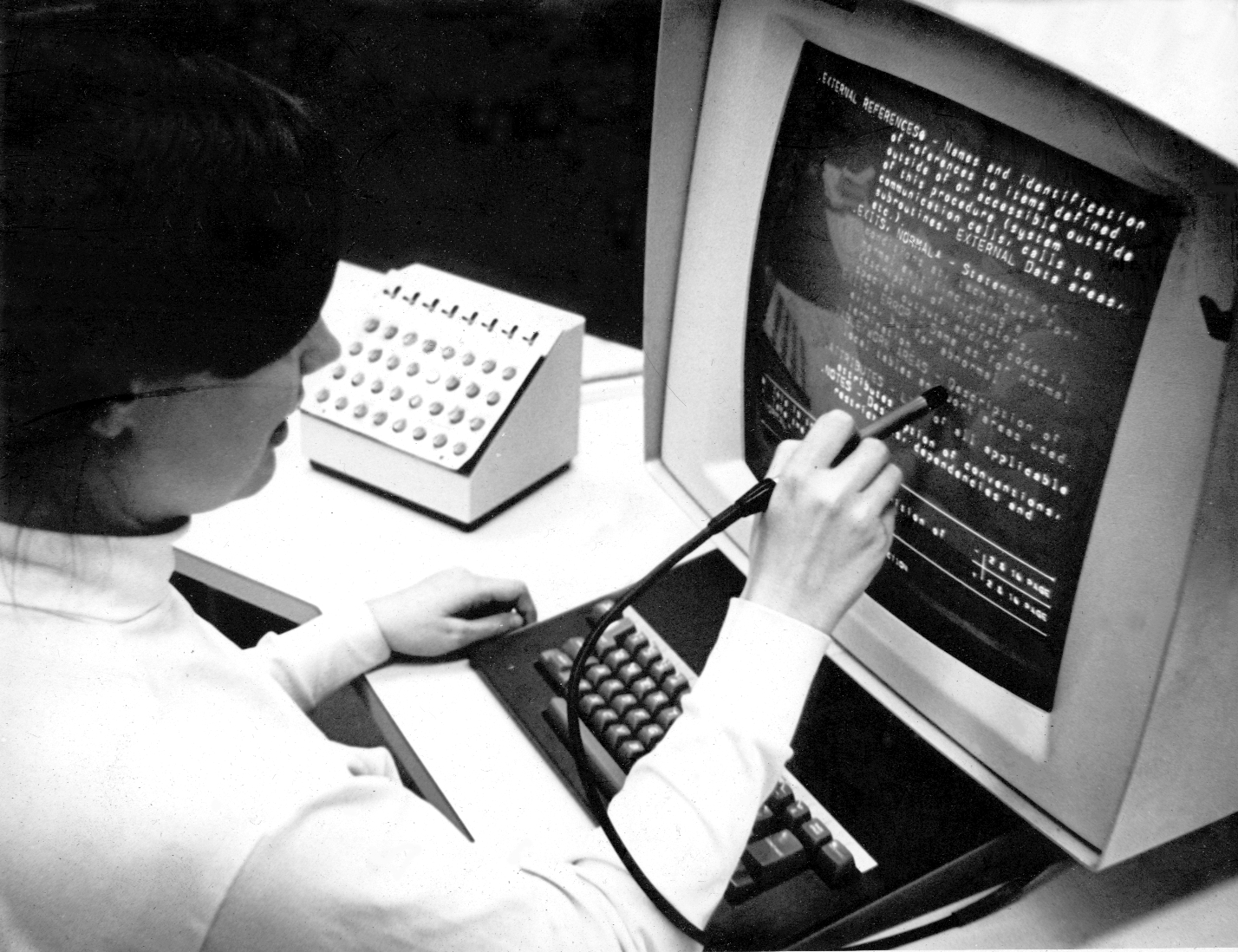|
Stack Light Rifle
The Stack Light Rifle is a light gun that was manufactured by Stack Computer Services for use with the ZX Spectrum, Commodore 64, and VIC-20. It was released in 1983. The rifle is bundled with three games on tape: ''High Noon'', ''Shooting Gallery'', and ''Grouse Shoot'' for the Spectrum. Different games were offered for the Commodore 64 and VIC-20 versions (all the games for these two systems were included on one cassette).The Stack Light Rifle is differentiated from future light guns as being realistic looking. The main pistol is attached to 12 feet of cable which ends in a dead-ended ZX81-size connector which plugs into the Spectrum's user port. A barrel, stock and telescopic sight can all be attached to the pistol. The barrel actually facilitated the gun's performance as it filtered out ambient light. These three parts combined to provide a reasonable – if not perfect – degree of accuracy, and allowed the user to effectively use the light gun from the comfort of an arm ... [...More Info...] [...Related Items...] OR: [Wikipedia] [Google] [Baidu] |
Light Gun
A light gun is a pointing device for computers and a control device for arcade and video games, typically shaped to resemble a pistol. Early history The first light guns were produced in the 1930s, following the development of light-sensing vacuum tubes. In 1936, the technology was introduced in arcade shooting games, beginning with the Seeburg Ray-O-Lite. These games evolved throughout subsequent decades, culminating in Sega's ''Periscope'', released in 1966 as the company's first successful game, which requires the player to target cardboard ships. ''Periscope'' is an early electro-mechanical game, and the first arcade game to cost one quarter per play. Sega's 1969 game ''Missile'' features electronic sound and a moving film strip to represent the targets on a projection screen, and its 1972 game ''Killer Shark'' features a mounted light gun with targets whose movement and reactions are displayed using back image projection onto a screen. Nintendo released the Beam Gun in ... [...More Info...] [...Related Items...] OR: [Wikipedia] [Google] [Baidu] |
ZX Spectrum
The ZX Spectrum () is an 8-bit computing, 8-bit home computer that was developed by Sinclair Research. It was released in the United Kingdom on 23 April 1982, and became Britain's best-selling microcomputer. Referred to during development as the ''ZX81 Colour'' and ''ZX82'', it was launched as the ''ZX Spectrum'' to highlight the machine's colour display, which differed from the black and white display of its predecessor, the ZX81. The Spectrum was released as six different models, ranging from the entry level with 16 Kilobyte, KB RAM released in 1982 to the ZX Spectrum +3 with 128 KB RAM and built in floppy disk drive in 1987; altogether they sold over 5 million units worldwide (not counting List of ZX Spectrum clones, unofficial clones). The Spectrum was among the first home computers in the United Kingdom aimed at a mainstream audience, and it thus had similar significance to the Commodore 64 in the US and the Thomson MO5 in France. The introduction of the ZX Spect ... [...More Info...] [...Related Items...] OR: [Wikipedia] [Google] [Baidu] |
Commodore 64
The Commodore 64, also known as the C64, is an 8-bit home computer introduced in January 1982 by Commodore International (first shown at the Consumer Electronics Show, January 7–10, 1982, in Las Vegas). It has been listed in the Guinness World Records as the highest-selling single computer model of all time, with independent estimates placing the number sold between 12.5 and 17 million units. Volume production started in early 1982, marketing in August for . Preceded by the VIC-20 and Commodore PET, the C64 took its name from its of RAM. With support for multicolor sprites and a custom chip for waveform generation, the C64 could create superior visuals and audio compared to systems without such custom hardware. The C64 dominated the low-end computer market (except in the UK and Japan, lasting only about six months in Japan) for most of the later years of the 1980s. For a substantial period (1983–1986), the C64 had between 30% and 40% share of the US market and two mil ... [...More Info...] [...Related Items...] OR: [Wikipedia] [Google] [Baidu] |
VIC-20
The VIC-20 (known as the VC-20 in Germany and the VIC-1001 in Japan) is an 8-bit home computer that was sold by Commodore Business Machines. The VIC-20 was announced in 1980, roughly three years after Commodore's first personal computer, the PET. The VIC-20 was the first computer of any description to sell one million units. It was described as "one of the first anti-spectatorial, non-esoteric computers by design...no longer relegated to hobbyist/enthusiasts or those with money, the computer Commodore developed was the computer of the future." The VIC-20 was called ''VC-20'' in Germany because the pronunciation of ''VIC'' with a German accent sounds like the German expletives "fick" or "wichsen". The term ''VC'' was marketed as though it were an abbreviation of ''VolksComputer'' ("people's computer," similar to Volkswagen and Volksempfänger). History Origin and marketing The VIC-20 was intended to be more economical than the PET computer. It was equipped with 5 KB of st ... [...More Info...] [...Related Items...] OR: [Wikipedia] [Google] [Baidu] |
Telescopic Sight
A telescopic sight, commonly called a scope informally, is an optical sighting device based on a refracting telescope. It is equipped with some form of a referencing pattern – known as a ''reticle'' – mounted in a focally appropriate position in its optical system to provide an accurate point of aim. Telescopic sights are used with all types of systems that require magnification in addition to reliable visual aiming, as opposed to non-magnifying iron sights, reflector (reflex) sights, holographic sights or laser sights, and are most commonly found on long-barrel firearms, particularly rifles, usually via a scope mount. The optical components may be combined with optoelectronics to add night vision or smart device features. History The first experiments directed to give shooters optical aiming aids go back to the early 17th century. For centuries, different optical aiming aids and primitive predecessors of telescopic sights were created that had practical or pe ... [...More Info...] [...Related Items...] OR: [Wikipedia] [Google] [Baidu] |
Atari XG-1 Light Gun
The Atari XG-1 light gun is a video game controller which was released in 1987. As Atari's only light gun, it is unique to the 8-bit family. It is compatible with the Atari XEGS, and with the 7800 and 2600 home video game consoles. It was bundled with the XEGS Deluxe home computer and video game console combination system, and with the light gun game ''Bug Hunt'' for the 7800 as model XES2001 for . Atari eventually released five light gun games on the 7800 ('' Alien Brigade'', ''Barnyard Blaster'', ''Crossbow'', ''Meltdown'', and ''Sentinel'') and one on the 2600 (''Sentinel''). Hardware The XG-1 is a specialized light pen. Generic light pen support was built into the Atari 8-bit home computer family since its 1979 launch. The ''Atari 400/800 Hardware Technical Reference'' recommends a calibration procedure each time a light pen is used, so that the software can compensate for this offset for maximal accuracy. ''Bug Hunt'' and ''Barnyard Blaster'' for the XEGS each have unique h ... [...More Info...] [...Related Items...] OR: [Wikipedia] [Google] [Baidu] |
Light Pen
A light pen is a computer input device in the form of a light-sensitive wand used in conjunction with a computer's cathode-ray tube (CRT) display. It allows the user to point to displayed objects or draw on the screen in a similar way to a touchscreen but with greater positional accuracy. A light pen can work with any CRT-based display, but its ability to be used with LCDs was unclear (though Toshiba and Hitachi displayed a similar idea at the "Display 2006" show in Japan). A light pen detects changes in brightness of nearby screen pixels when scanned by cathode-ray tube electron beam and communicates the timing of this event to the computer. Since a CRT scans the entire screen one pixel at a time, the computer can keep track of the expected time of scanning various locations on screen by the beam and infer the pen's position from the latest time stamps. History The first light pen, at this time still called "light gun", was created around 1945–1955 as part of the Whirl ... [...More Info...] [...Related Items...] OR: [Wikipedia] [Google] [Baidu] |
High Noon (video Game)
''High Noon'' (''Highnoon'' on the title screen) is a western-themed shoot 'em up game written for the Commodore 64 and published by Ocean Software in 1984. Originally advertised on both the Commodore 64 and ZX Spectrum, the game itself was only ever released on the Commodore 64. The game has five levels. The player takes the role of the good (white) sheriff in the American Old West. He must defend his town against outlaws looking to abduct women from the local ''"Saucy Sue's Saloon"'' and rob the local bank, by shooting them. Shooting can be done in a horizontal, vertical or diagonal direction. The background music is “Do Not Forsake Me: The Ballad of High Noon,” from the movie '' High Noon'', and arranged for the game by David Dunn.https://lacoste42.itch.io/high-noon Gameplay Image:C64 high noon screenshot1.gif, Image:C64 high noon screenshot2.gif, Image:C64 high noon screenshot3.gif, Image:C64 high noon screenshot4.gif, The game consists of five levels. In ... [...More Info...] [...Related Items...] OR: [Wikipedia] [Google] [Baidu] |
Light Guns
A light gun is a pointing device for computers and a control device for arcade and video games, typically shaped to resemble a pistol. Early history The first light guns were produced in the 1930s, following the development of light-sensing vacuum tubes. In 1936, the technology was introduced in arcade shooting games, beginning with the Seeburg Ray-O-Lite. These games evolved throughout subsequent decades, culminating in Sega's ''Periscope'', released in 1966 as the company's first successful game, which requires the player to target cardboard ships. ''Periscope'' is an early electro-mechanical game, and the first arcade game to cost one quarter per play. Sega's 1969 game ''Missile'' features electronic sound and a moving film strip to represent the targets on a projection screen, and its 1972 game ''Killer Shark'' features a mounted light gun with targets whose movement and reactions are displayed using back image projection onto a screen. Nintendo released the Beam Gun in ... [...More Info...] [...Related Items...] OR: [Wikipedia] [Google] [Baidu] |
Video Game Accessories
A video game accessory is a distinct piece of hardware that is required to use a video game console, or one that enriches the video game's play experience. Essentially, video game accessories are everything except the console itself, such as controllers, memory, power adapters (AC), and audio/visual cables. Most video game consoles come with the accessories required to play games out of the box (minus software): one A/V cable, one AC cable, and a controller. Memory is usually the most required accessory outside of these, as game data cannot be saved to compact discs. The companies that manufacture video game consoles also make these accessories for replacement purposes (AC cords and A/V cables) as well as improving the overall experience (extra controllers for more players, or unique devices like light guns and dance pads). There is an entire industry of companies that create accessories for consoles as well, called third-party companies. The prices are often lower than those mad ... [...More Info...] [...Related Items...] OR: [Wikipedia] [Google] [Baidu] |





